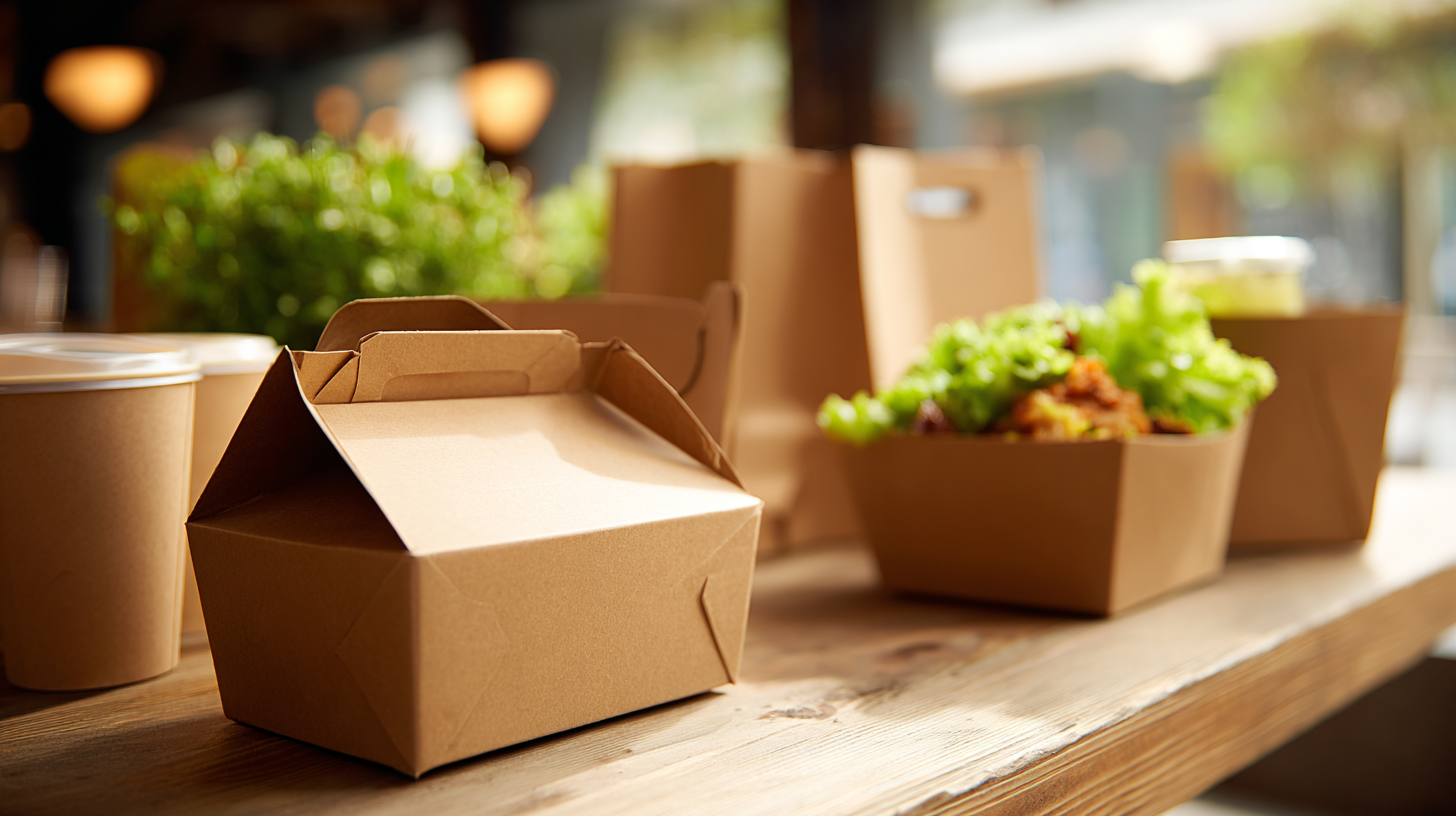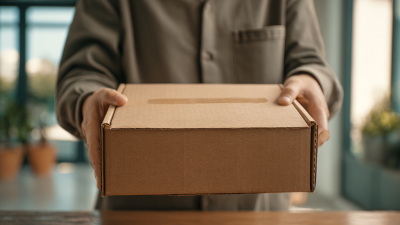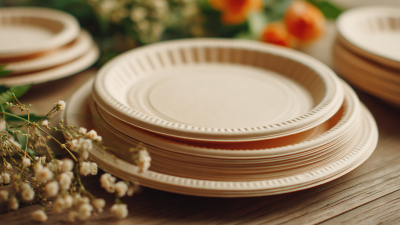Leave Your Message
In today's increasingly eco-conscious marketplace, businesses are under pressure to adopt sustainable practices that not only meet consumer demands but also contribute to environmental preservation. One effective strategy is the transition to Cardboard Food Packaging Boxes, which have been shown to significantly reduce the carbon footprint compared to traditional plastic packaging. According to a report by Smithers Pira, the global market for sustainable packaging is expected to reach $400 billion by 2027, with cardboard being a leading material due to its recyclability and biodegradable properties. Additionally, a survey by the International Institute for Sustainable Development revealed that 72% of consumers are willing to pay more for products that utilize environmentally friendly packaging. By embracing Cardboard Food Packaging Boxes, businesses can not only ensure compliance with new regulations but also resonate with a growing demographic of environmentally conscious consumers, thus positioning themselves as leaders in sustainability.

As sustainability becomes increasingly important in the business landscape, cardboard food packaging boxes are emerging as a top choice for environmentally conscious companies. These packaging solutions not only reduce carbon footprints but also appeal to a growing consumer base that values eco-friendly practices. Innovations in cardboard designs, such as biodegradable coatings and water-resistant treatments, are making it possible for businesses to maintain product freshness without compromising sustainability.
Tips for adopting cardboard food packaging include prioritizing recyclable materials and exploring local suppliers to minimize transportation impacts. Incorporating clear recycling instructions on your packaging can also encourage consumers to participate actively in sustainability efforts. Additionally, consider customizing your cardboard boxes to enhance branding while promoting sustainability; a unique design can set your product apart and create a memorable customer experience.
As more businesses move toward sustainable practices, staying informed about trends in cardboard food packaging is crucial. Look for advancements such as plant-based inks and compostable materials that can play a role in reducing environmental impact. By embracing these emerging trends, businesses can lead the way in the green movement while also meeting consumer demands for responsible packaging solutions.
The environmental impact of packaging materials is becoming increasingly significant as businesses seek sustainable solutions. When comparing cardboard food packaging boxes to plastic options, the statistics reveal a stark contrast. Cardboard, made from renewable resources, is biodegradable and recyclable, thus contributing less to landfill waste. In contrast, plastic can take hundreds of years to decompose and poses severe threats to marine life and ecosystems. The shift towards cardboard packaging aligns with a growing consumer preference for eco-friendly products, which is reflected in market trends across various sectors, including pet food.

The pet food packaging market is an illustrative example of this transition. As more consumers opt for sustainable packaging options, the demand for cardboard boxes is rising across different food types, including dry food, wet food, and treats. Forecasts indicate sustained growth in the paper packaging market, driven by the need for environmentally friendly materials. By 2032, the market for paper packaging, including boxes and bags, is expected to expand significantly as companies increasingly adopt innovative materials like corrugated board and molded pulp. This shift not only helps reduce environmental impact but also caters to the evolving expectations of consumers for responsible and sustainable packaging options.
Cardboard food packaging has emerged as a cost-effective alternative for businesses striving to balance sustainability and profitability. According to a report by Smithers Pira, the global market for paper and board packaging is expected to reach $390 billion by 2024, with a significant portion attributed to food packaging. The lightweight nature of cardboard not only reduces transportation costs but also decreases carbon emissions, making it an attractive option for eco-conscious companies. Furthermore, studies show that switching to cardboard can result in a 10-30% reduction in packaging costs, depending on materials and design.

Moreover, the versatility of cardboard allows businesses to customize packaging to meet specific needs without incurring significant costs. A survey conducted by the Paper & Packaging Board found that 74% of consumers are willing to pay more for sustainable packaging, demonstrating that eco-friendly options can enhance brand loyalty and lead to increased sales. As the demand for sustainable practices continues to rise, investing in cardboard food packaging not only aligns with regulatory requirements but also offers quantifiable financial benefits, paving the way for businesses to flourish in an increasingly green marketplace.
Consumer preferences are increasingly tilting towards sustainable packaging, especially in the food industry. A recent report projects the global green packaging market will reach approximately $365.46 billion by 2025. This surge is driven by heightened awareness of environmental issues and a collective push for eco-friendly options. As consumers grapple with the rising cost of living, their choices reflect a growing demand for sustainable alternatives that do not compromise on quality. The transition from traditional, predominantly plastic packaging towards cardboard food packaging is not merely a trend but a fundamental shift in consumer behavior.
In Europe, the packaging landscape is evolving, with a projected growth in the milk carton market to $1.8 billion by 2035, spurred by strong retailer initiatives aimed at sustainability. With consumers increasingly valuing both sustainability and affordability, packaging decisions are being driven by an awareness of ecological impact. Additionally, the demand for innovative food packaging solutions is becoming a crucial factor in business models, emphasizing the importance of sustainable practices within the competitive landscape of the food packaging industry. As consumers become more discerning, brands that adopt sustainable packaging solutions are positioned to thrive in this changing market.
Innovative cardboard packaging designs play a pivotal role in enhancing brand image while promoting sustainability. As consumers become increasingly aware of environmental issues, businesses must prioritize eco-friendly packaging solutions that not only protect products but also resonate with their target audience. Cardboard packaging, made from renewable resources, offers a versatile canvas for creative designs that can elevate the overall consumer experience. Eye-catching graphics, unique shapes, and functional features can significantly differentiate a brand in a crowded marketplace, demonstrating its commitment to sustainability and innovation.
Moreover, the use of cardboard food packaging boxes enables brands to communicate their values effectively. By incorporating messaging about their sustainability efforts directly onto the packaging, companies can engage customers and foster a sense of loyalty. The tactile quality of cardboard also enhances the unboxing experience, making it more memorable and shareable for consumers. This combination of aesthetic appeal and sustainable practices not only strengthens brand identity but also aligns with the growing consumer preference for environmentally responsible choices, thus creating a win-win situation for both businesses and their customers.






